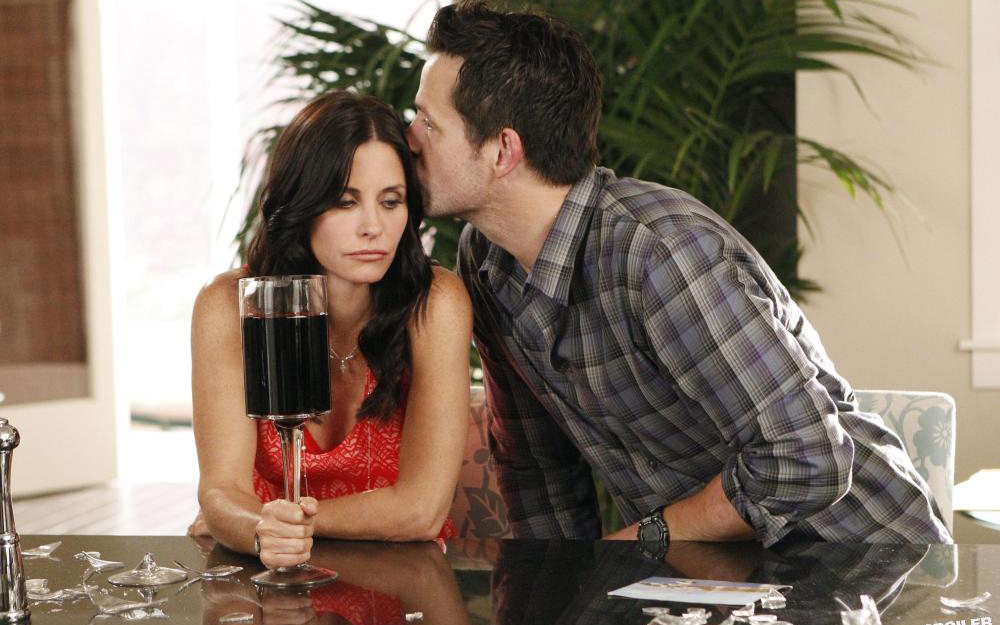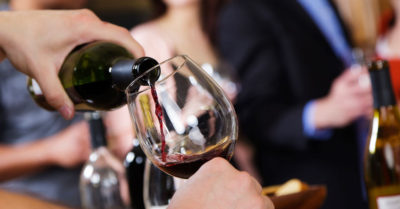
BY RICK RIOZZA
Everyone and anyone who finds themselves playing into the game of wine started out as a wine newbie. And the first tactic that we had to deal with is that after all we knew, there is always more to learn. And a couple of the most beguiling aspects that keeps us in the game is not only the sense of taste but the joy of sharing and connecting with the senses and the souls of our fellow man!
Every glass you take, every move you make, they’ll be watching you. Hey—it’s not that creepy or scary; rather, the wine game centers around sharing. Sharing a bottle with family, friends, colleagues, associates, gatherers, interlopers, arbitrators, or yes—even enemies, goes to further the human spirit just that much more. And—as with the best games on earth, what fun and enjoyment we can have!
As your gad-about wine steward, I’ve come across many shoppers who are quick to admit that they really don’t know much about wine. I’ll readily give them counsel in the fact that they’re in the correct place or aisle and then I’ll ask, “well then, what type of wine have you enjoyed previously?” Hopefully these folks have a bit of time for me to let them know they have nothing to fear and to join me about to quickly explore the world colored red, white, purple, and pink.
For those quaffers just coming on board—who’ve just experienced a minor epiphany when tasting a wine from out-of-the-blue, there’s an awakening that will drive you silly. It doesn’t take long to realize that to become knowledgeable in the wine game, you must taste, taste, and taste again. That’s all I’ve been doing these last few decades. Of course we do more than taste: we savor, we enjoy. Those inclined to analyze will go figuring here and there—but, after all the personal pleasurable sensory exercising, it’s that human spirit that will then wish to share the same with others. The wine game is so social.
Gathering wine knowledge has never been easier and there are plenty of ways to educate yourself about wine: Reading and studying through the internet seems the easiest and the most relaxed way to study while still in your pajamas. And who isn’t going to have a glass or two by their side while they’re reading? And how easy is it to remember the wines you’re sampling while studying the type of grape you’re reading about.
As in all walks of life, the new vino venturer will quickly gravitate to the type and style of wine their brain and heart desires. I was very fortunate at this endeavor; I became an egalitarian enthusiast immediately! Red, white, rosé—you name it, I was enjoying the qualities each different grape brought to the table. I didn’t join or stay loyal to a certain color team. I meet folks all the time that simply detest red wines, or, white wines; sweet wines or dry wines, sparkling wines or still. Hey!–it’s your gullet not mine; but really? There are magnificent wines out there in all colors and styles. It goes to show you that there are both strict conservatives and lofty liberals in the game.
I’m not a big sweet wine fan. But, most fortunately, I came across French Sauternes early in my wine career. It’s one of the sweetest wines made! And it’s one of the most delicious. A dessert wine of course, and these days with all of the fantastic foodie fusions, it works great with sweeter shell-fish and Indonisian-style dishes.
 As wine moments and stories store in the memory, I recall this instance as it were yesterday: A wine enthusiast for over 25 years, my friend had never tried a Sauternes nor desired to. One afternoon, I literally barged into his office (I had just come from a wine auction) and I forced him to sample a vintage Chateau D’Yquem Sauternes. He sat, starring out through the window, simply amazed at the “new” flavors and complexities he was experiencing. Sometime later, he threw a Super Bowl Party where he offered that wine to his football friends. Beer drinkers rejoiced to see through a Sauternes sunset.
As wine moments and stories store in the memory, I recall this instance as it were yesterday: A wine enthusiast for over 25 years, my friend had never tried a Sauternes nor desired to. One afternoon, I literally barged into his office (I had just come from a wine auction) and I forced him to sample a vintage Chateau D’Yquem Sauternes. He sat, starring out through the window, simply amazed at the “new” flavors and complexities he was experiencing. Sometime later, he threw a Super Bowl Party where he offered that wine to his football friends. Beer drinkers rejoiced to see through a Sauternes sunset.
In food, I prefer the salty, sour, savory line of dishes; maybe that’s why I enjoyed early on, European wines. Especially back in the day, I liked the lighter French reds that came off much more sour than their California counterparts—and I was quick to comprehend the “new world” fruit style as compared to the esoteric aromas and flavors of the “old world”. Lately in the wine game, many European winemakers strive to make their wines more “American” with more fruit dominance. How fun is that to taste and discern between the different styles of just one grape from different world regions.
Most wine enthusiasts remember those times when they began to search out a particular wine and were just amazed by the price differentials with that one grape. California Chardonnay, for example, can be found hovering at around seven to ten dollars with very good brands such as Bogle, Fetzer, Mark West, McManis, Estancia, and A by Acacia that exhibit grape’s basic apple, pear, flowery flavors. And then you find another level of Chard. These are the price-heavy Kistlers, Rameys, Kongsgaards, Marcassins, Hobbs, and some elite others that show brilliant golden straw colors and warm apple pie à la mode flavors, along with just enough sinful citrus, that will make you want to shout: “Come on now!” Their generous palates are all about exotic fruit and spice, a lengthy finish, and an ethereal experience.
Getting out to the local wine bars is a great learning experience at low cost. Let’s look at these in the next issue. Cheers!












































